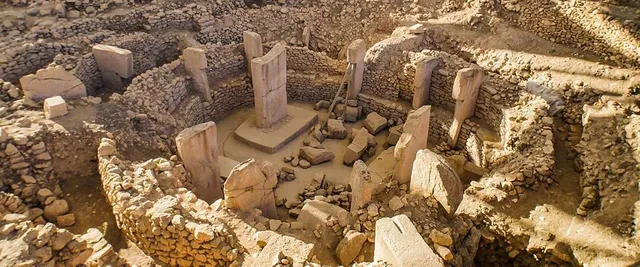
When we think of world heritage sites, iconic landmarks like the Pyramids of Giza, the Great Wall of China, or the Colosseum often come to mind. However, beyond these famous monuments lie lesser-known gems that hold immense historical, cultural, and natural value. These hidden heritage sites offer unique glimpses into the past and deserve more recognition. Let's embark on a journey to discover some of these hidden treasures around the world.
Göbekli Tepe, Turkey
Located in southeastern Turkey, Göbekli Tepe is considered the world's oldest known temple complex, dating back to around 9600 BCE. This archaeological marvel predates Stonehenge by several millennia and challenges our understanding of prehistoric societies. The site features massive T-shaped stone pillars adorned with intricate carvings of animals and abstract symbols, suggesting advanced knowledge and craftsmanship (MediaNews4U).Lamu Old Town, Kenya
Lamu Old Town, situated on Lamu Island off the coast of Kenya, is one of the oldest and best-preserved Swahili settlements in East Africa. Established in the 12th century, the town boasts narrow streets, coral stone buildings, and beautifully carved wooden doors. Its unique blend of African, Arab, Indian, and European influences reflects a rich history of trade and cultural exchange (MediaNews4U).Rapa Nui National Park, Chile
Home to the enigmatic Moai statues, Rapa Nui (Easter Island) is a remote Polynesian island in the southeastern Pacific Ocean. The park encompasses numerous archaeological sites, including the famous stone figures that were carved by the Rapa Nui people between 1250 and 1500 CE. These statues, some standing over 30 feet tall, continue to intrigue researchers and visitors with their mysterious origins and purpose (MediaNews4U).Leptis Magna, Libya
Leptis Magna, located on the Mediterranean coast of Libya, is one of the most well-preserved Roman cities outside of Italy. Founded by the Phoenicians around the 7th century BCE and later expanded under Roman rule, the city features impressive ruins, including a grand amphitheater, basilicas, baths, and a triumphal arch. Its remote location has helped protect it from extensive looting and destruction (MediaNews4U).Chavin de Huantar, Peru
Chavin de Huantar is an archaeological site in the Andean highlands of Peru, dating back to 1200 BCE. As the center of the Chavin culture, it served as a major religious and ceremonial hub. The site includes intricate stone carvings, underground passageways, and the iconic Lanzón monolith. Chavin de Huantar provides valuable insights into early Andean civilizations and their complex spiritual practices (MediaNews4U).Derinkuyu Underground City, Turkey
Hidden beneath the surface of central Turkey, the Derinkuyu Underground City is a vast subterranean complex that extends over 200 feet below ground. Believed to have been built around the 8th century BCE, it could accommodate up to 20,000 people along with their livestock and supplies. The city features intricate ventilation shafts, wells, and communal spaces, showcasing advanced engineering skills of ancient Anatolian societies (MediaNews4U).Nan Madol, Micronesia
Nan Madol, located off the eastern coast of Pohnpei in Micronesia, is an ancient city built on a series of artificial islets linked by canals. Constructed between the 8th and 13th centuries, it served as the ceremonial and political center of the Saudeleur dynasty. The site’s impressive basalt structures and its unique layout have earned it the nickname "Venice of the Pacific" (MediaNews4U).Kunya-Urgench, Turkmenistan
Kunya-Urgench, situated in modern-day Turkmenistan, was once a thriving Silk Road city and the capital of the Khorezm region. The site is home to several well-preserved monuments, including mausoleums, minarets, and the remains of a grand caravanserai. Despite suffering destruction at the hands of Genghis Khan's armies in the 13th century, Kunya-Urgench remains a testament to the region's rich cultural heritage (MediaNews4U).
Conclusion
These hidden heritage sites offer fascinating insights into the diverse cultures and histories of our world. They remind us that beyond the well-trodden tourist paths, there are countless stories waiting to be discovered and preserved. As we continue to explore and appreciate these lesser-known treasures, we contribute to the preservation of our shared global heritage.